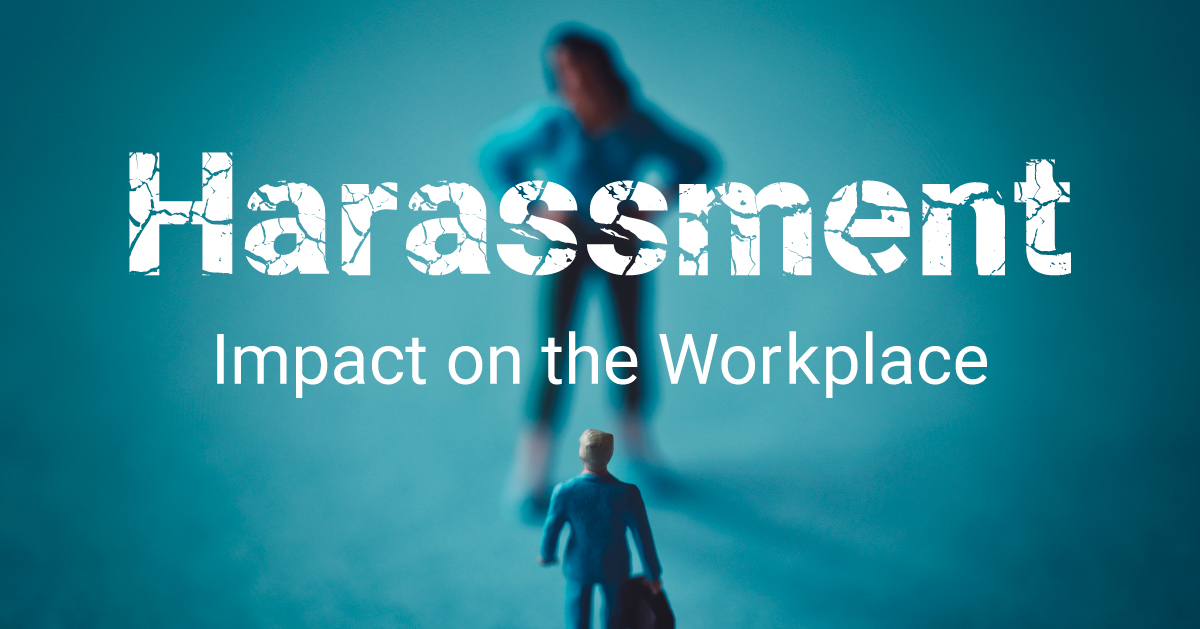Harassment
Impact on the Workplace

Power harassment and sexual harassment are well-known among "harassments" that harass or disadvantage others, but nowadays harassment is becoming more diverse and complicated, especially for those in charge of human resources.
In this article, we will touch on the different types of harassment and introduce specific ways to deal with them. If you are in charge of human resources at a company, please refer to this article.
What is "harassment" in the workplace?

Harassment refers to annoying behavior such as harassment or bullying of a person. It does not matter whether the harasser has malicious intent or not, if the harassed person feels mentally uncomfortable, it constitutes harassment.
Survey by the Ministry of Health, Labor and Welfare(Enforcement status of the individual labor dispute resolution system for the fiscal year 2022)According to the "Japan Labor Relations Commission (JLRC)," the number of consultations on civil individual labor disputes related to "bullying and harassment" has topped the list for eight consecutive years. Currently, problems caused by harassment are occurring in many companies.
Typical Types of Harassment

There are many different types of harassment. Let's take a look at some of the most common types of harassment in the workplace.
bullying
Power harassment (power harassment) is the act of using one's position in the workplace to inflict mental or physical pain on subordinates. In simple terms, it is bullying and harassment in the workplace, and some supervisors may confuse it with coaching.
Nevertheless, "reverse power harassment," in which subordinates inflict mental or physical pain on their superiors, is now also a problem, and is becoming a form of harassment that does not depend on the perpetrator's position.
sexual harassment
Sexual harassment (sexual harassment) refers to any behavior that harms the working environment or causes emotional distress through sexual language or behavior. Both men and women can be perpetrators or victims of sexual harassment, and sexual harassment of the same sex as well as the opposite sex is on the rise.
Another type of harassment similar to sexual harassment is what is called maternity harassment, in which inconsiderate words are hurled at female workers who are pregnant or have given birth.
workplace mobbing
Moral harassment (moraharassment) is an act of offending the personality or dignity of the other person by comments or attitudes that cause mental or physical pain. Specific examples include "intentionally rejecting the other person's opinion" and "unnecessarily giving attention in public.
Moral harassment is a type of harassment that is difficult to recognize around others because the perpetrator is not aware of the situation and physical evidence is difficult to leave behind.
harassment or bullying based on fear or anxiety
Care harassment is an act of inflicting emotional distress on those who are unable to work as they wish due to family caregiving or other reasons. For example, a supervisor may take advantage of his/her position to "intentionally lower the personnel evaluation" or "withdraw nursing care leave" for an employee who is unable to work overtime due to nursing care.
Since nursing care leave is recognized as a worker's right, care harassment can be illegal under the law.
second harassment
Second harassment (sekaharasu) is a term used to describe the secondary victimization of a power or sexual harasser by another supervisor or co-worker.
Cases have arisen where people are afraid of this second harassment and are unable to talk to others even though they have been harassed.
It is characterized by low awareness of harassment and tends to occur in workplaces with poor ventilation.
harassment or bullying via remote harassment
Remote harassment (remoharassment, teleharassment) is one type of harassment that has increased with the recent spread of remote work.
Harassment that occurs while working remotely, such as "stepping into private matters during a web conference" or "forcing an online drinking session" are examples. Misjudgment of distance and difficulty in communication may result in unintentional remote harassment.
Causes of Harassment

How does workplace harassment occur? Let's look at four major reasons, in order.
Reason 1: There is a difference in individual awareness.
The first reason is that some people have biased ideas, such as differences in the sense of gender and assumptions due to hierarchical relationships. When working in an organization, there are employees with a variety of ideas. What may seem like communication to one person may be offensive to another.
Misalignment of personal awareness is mainly likely to occur in large companies and departments with many people.
Reason 2: Poor work environment
Harassment is also more likely to occur in a workplace with poor ventilation. Specific examples would be a closed environment with an overbearing supervisor or an environment where mistakes are not tolerated. Controlling spaces are much more likely to normalize harassment. eee
Without a workplace where the opinions of working employees are shared and reflected well within the company, it will be difficult to solve harassment problems.
Reason 3: Diluted communication
The increase in online and tool-based communication in the Corona disaster is another reason for harassment. With the decrease in face-to-face communication and the proliferation of social networking sites, it has become more difficult for employees to communicate with each other.
Lack of communication may lead to inadequate trust, which may lead to harassment due to mutual misunderstandings. Adequate communication can prevent harassment.
Reason 4: Low awareness of harassment
To begin with, awareness of harassment tends to be remarkably low in Japan. Survey by the Ministry of Health, Labor and Welfare(Report on the Survey on Harassment in the Workplace in FY2020)has disclosed that the number of harassment consultations over the past three years has not decreased, with the exception of sexual harassment.
Few companies remain committed to harassment prevention, and there is a noticeable lack of awareness among employees in management positions.
What are the negative effects of harassment on a company?

Harassment is one of the issues that companies need to address as a priority. Let's take a look at the specifics of how it can negatively impact a company.
Decreased employee motivation
The first negative effect of harassment is a loss of employee motivation. In a workplace where harassment is rampant, good human relations cannot be built, and motivation is greatly impaired. This can have a negative impact not only on the victims of harassment, but also on the employees who witness the harassment.
When motivation declines, operational efficiency and productivity decrease significantly, which in turn has a negative impact on corporate performance.
Increased turnover
Employees who are harassed leave the company, leading to higher turnover. Survey by the Ministry of Health, Labor and Welfare(Report on the Survey on Harassment in the Workplace in FY2020)According to the "Japan's Ministry of Health, Labor and Welfare", about 10% of all respondents "resigned from the company" as the behavior of "those who have been subjected to power harassment/sexual harassment/significant annoyance from customers, etc. in the past three years".
When companies hire employees, they have a duty to consider the work environment. Therefore, there is no possibility of not only an increase in turnover, but in the worst case scenario, the harassed employee may sue the company and be held legally liable.
Damage to corporate image
If harassment issues are brought to light through suicides or lawsuits, the company's image will be damaged. Social credibility and workplace stability will also be lost, and relationships with business partners may be severed.
In particular, we are now in the era of the SDGs, which recognize the diversity of the working population. the SDGs (Sustainable Development Goals) are international goals adopted at the 2015 UN Summit to achieve a sustainable and better world by 2030.
Harassment is contrary to the goals of the SDGs, such as "Achieve gender equality" and "Peace and justice for all," and will be shunned by the public.
What are SDGs? | JAPAN SDGs Action Platform | Ministry of Foreign Affairs of Japan
How to Handle Harassment

Laws related to the prevention of power harassment went into effect in June 2020 and were revised in April 2022. Since the law is now fully mandatory, even for small and medium-sized enterprises, public interest and awareness are increasing.
Next, let's look at specific ways to deal with harassment.
Raise awareness and make people aware of harassment
Companies should take the initiative in raising awareness and making people aware of harassment. Specific measures include conducting training and establishing rules and regulations.
When conducting training, try to invite experts as much as possible to provide basic knowledge of harassment and its countermeasures. If it is not possible to invite a lecturer, seminars using educational materials or videos are also effective.
When establishing rules and regulations, be sure to include specific punishments in the work rules, such as disciplinary dismissal or pay reduction.
Establishment of a consultation service
Arrange for a counselor and set up an internal harassment consultation service. It is important to ensure the privacy of the person consulting by using e-mail, telephone, or the company intranet in addition to face-to-face meetings.
In addition to the human resources department, a labor union, in-house counselors, or other counseling services can be set up so that employees can feel free to consult with them. If in-house counseling is not feasible, you can also direct them to external counseling services such as the General Labor Consultation Corner or Hello Work.
Appropriate handling of harassment afterwards
No matter how many measures are taken to prevent harassment, problems can still occur. When this happens, it is necessary to take prompt and appropriate action without burying the issue. First of all, confirm the facts and take appropriate action against the victim and the harasser. Measures must be taken against the harasser in accordance with the employment regulations.
On the other hand, for employees who have been harassed, offer options such as transfer or leave of absence, while respecting the wishes of the harasser. In addition, it is important to make efforts to prevent harassment from happening again.
Summary
In this issue, we have introduced the types of harassment, their negative impact on companies, and the measures companies should take to deal with them. It is important for companies to create a working environment where harassment does not occur on a daily basis, and if it does occur, to resolve it as soon as possible.
For in-house elearning courses, learningBOX will help you effectively.
learningBOX is a cloud-based elearning platform
and you can easily build training courses online.
Created content will be delivered to employees and you can track their learning progress.
There will be something you can do to improve your work environment.
▼You may also like:



-
Discover rich featuresService Guide
-
Feel free to contact usGet in Touch
-
Try our Free PlanTry Free Plan










